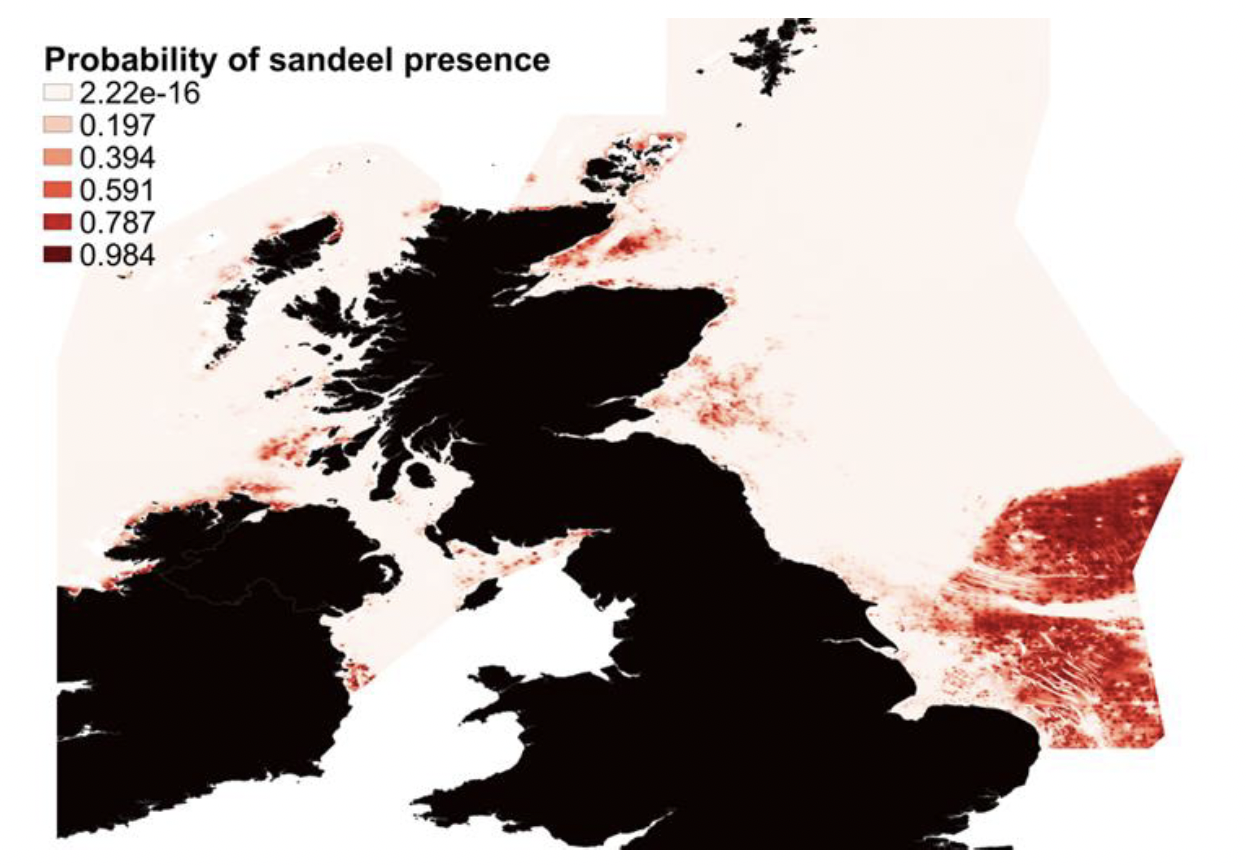Sandeel fishing: consultation
We are consulting on proposals to close fishing for sandeel in all Scottish waters. This paper explains the background of the consultation, options considered, and outlining the questions for respondents.
4. Sandeel
Sandeel are part of the Ammodytidae family, consisting of small eel-like fishes, and represent the most abundant fish species in the North Sea playing a key role in North Atlantic marine food webs. Variations in the abundance and availability of sandeel or other forage fish can have important effects on both ends of marine food web (top-down regulation of lower trophic levels and bottom-up effects on marine predators) and disrupt the energy transfer across the whole food-web[17].
Sandeel in the North Atlantic and the North Sea refers to a complex of species of which the most abundant is the lesser sandeel (Ammodytes marinus), which supports one of the largest single-species fishery in the North Sea. The lesser sandeel is a winter-spawning species which lay eggs on the sand in winter months, with planktonic larvae occupying the water column from hatching in February - April to settlement in May - June. Settlement marks a key transition in the sandeel life cycle, after which they form pelagic feeding schools during the day, burying into the sand at night. Following the summer feeding season, sandeel remain in the sand day and night for the overwintering period, apart from a short spawning period in December - January, until emergence from the sand the following spring. These aspects of sandeel life cycle, particularly this life-long attachment to a sand bank, are important determinants of their distribution.
Sandeel are distributed broadly in Scottish waters where they are highly reliant upon the availability of suitable sandy substrates[18] [19] [20] [21]. Langton et al. (2021) provides a prediction of sandeel distributions within and beyond the limits of Scottish waters (Figure 2). This predicts the highest probability of sandeel occurrence on Dogger Bank and identifies sandeel grounds in the Firth of Forth (consistent with historic sandeel fishing grounds), the Moray Firth, the east coast of Orkney, east of Dublin, northeast coast of Donegal, north and west of Islay, and to the north and west of Lewis. Model predictions were validated against the east coast sandeel dredge survey and both the North Sea and West of Scotland International Bottom Trawl Surveys.
Climate change acting through an increase of sea temperature, ocean acidification, a decrease in oxygen levels and their cumulative effects can also affect sandeel abundance through direct effects on survival and physiological rates, including phenology (the timing of key life-stages). Direct effects on the phenology of both sandeel and their copepod prey can lead to indirect effects of climate change on sandeel abundance through trophic
mismatch[22] [23]. High fishing mortality is often associated with the selective removal of older and larger fish and evidence show that these fish tend to spawn earlier. Limiting or closing the sandeel fishery may therefore improve sandeel resilience to the seasonal variation in prey availability.

4.1 Potential effects of fishery closure on sandeel
Causes of variation in sandeel abundance are numerous and are driven by fishing mortality and (principally) natural mortality, the latter being influenced by factors such as environmental change (temperature effects, regime shifts) and top-down processes (trophic regulation by marine predators). Evidence shows that causes of variation in natural mortality can play a more prominent role than fishing mortality in shaping sandeel abundance in Scottish waters and as these causes of variation are rarely accounted for, an effect of fishing pressure on sandeel abundance may be rarely observed. However, while results should be considered with caution, age 1 sandeel seem to have a higher survival rate in the current fishery closure[24].
While the effect of a fishery closure may be difficult to observe in a changing environment, sandeel is likely to benefit from spatial management measures aimed at reducing fishing mortality due to their life-long attachment to specific sand banks and limited dispersal and movements. A fishery closure may promote sandeel resilience to climate change by limiting variation in Spawning Stock Biomass (SSB) that might affect recruitment and ensuring that sufficient large, early spawning individuals are present in the population. In accordance, a modelling study found that population collapse was more likely under exploitation[25].
Furthermore, a reduction of fishing mortality could promote resilience in local sandeel populations by providing a buffer against an increase in predation mortality should predator stocks increase in abundance (for example recent positive stock trends for whiting and haddock).
Contact
Email: sandeelconsultation@gov.scot
There is a problem
Thanks for your feedback